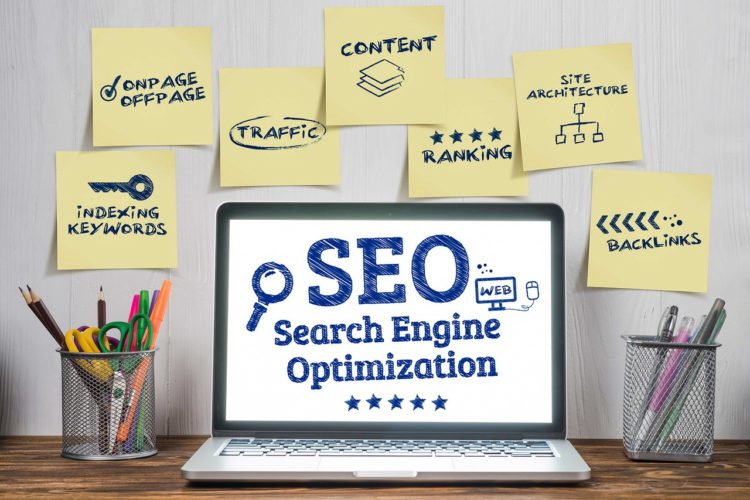As we move into the digital age, having a website is a must for any business. However, merely having a well-designed website is not enough. To succeed online, businesses need to ensure that their website is optimized for search engines. In other words, they need to focus on on-page SEO techniques. On-page SEO refers to the optimization of individual web pages within a website to improve its search engine ranking and drive organic traffic.
By optimizing on-page factors, businesses can improve their visibility in search engines, attract more visitors, and ultimately, achieve their business goals. In this blog post, we will share 5 must-try on-page SEO techniques for effective optimization. These techniques are tried and tested and are used by SEO experts worldwide to boost their website’s online visibility. From optimizing your website’s title tag and meta description to creating engaging content, we will cover everything that you should know to optimize your website for search engines. Whether you are a small business owner or a seasoned marketer, this blog post will
1. Optimize page Titles and Headings
Optimizing page titles and headings is one of the most crucial on-page SEO techniques to improve the search engine visibility of your website. The title tag is the first thing that search engines and users see when they land on your page, so it should accurately reflect the content of the page while also containing the targeted keywords. Make sure to keep the title tag concise and compelling, ideally between 50-60 characters, to ensure it displays correctly in search results. Similarly, headings help to structure the content of your page and provide context to search engines about the content. Use descriptive headings, and make sure to include your primary keywords to help search engines understand the topic of your page. By optimizing your page titles and headings, you can improve the relevance and visibility of your website, ultimately helping to drive more organic traffic to your site.
2. Use Relevant and Strategic Keywords
Using relevant and strategic keywords is one of the most important on-page SEO techniques to help improve your website’s visibility and search engine rankings. Keywords are the words or phrases that people use to search for information on search engines. By including relevant and strategic keywords in your website’s content, title tags, meta descriptions, and URLs, you can help search engines understand what your website is about and improve the chances of your website appearing in relevant search results. However, it’s important to use keywords in a natural and organic way, without overstuffing or spamming them throughout your content. A good rule of thumb is to focus on one or two main keywords per page and use variations and related keywords to provide context and depth to your content. By using relevant and strategic keywords effectively, you can help improve your website’s on-page SEO and attract more organic traffic to your site.
3. Utilize Internal Linking Structure
One essential on-page SEO technique is to utilize a strong internal linking structure. Internal links are links that connect one page of your website to another page on the same website. These links help to establish the hierarchy and architecture of your website, which search engines use to understand the relationship between different pages. By incorporating internal links, you can help to distribute page authority and improve the visibility and ranking of your website. Additionally, internal links can provide a better user experience by directing visitors to related content, encouraging them to stay on your website longer, and reducing the bounce rate. Therefore, it is important to create a well-planned internal linking structure that incorporates relevant anchor text and links to important pages.
4. Optimize Images with alt tags
As one of the top 5 must-try on-page SEO techniques for effective optimization, optimizing images with alt tags can significantly improve your website’s search engine rankings and overall user experience. Alt tags, also known as alternative text descriptions, provide a textual representation of images for search engines to understand the context and purpose of the image. This not only helps search engines better index and rank your website but also improves accessibility for users who may have visual impairments or use assistive technologies.
To optimize your images with alt tags, make sure to use descriptive keywords that accurately reflect the image content and context. Avoid stuffing alt tags with irrelevant or spammy keywords, as this can actually harm your SEO efforts. Incorporating alt tags into your image optimization strategy can greatly enhance the visibility and accessibility of your website, leading to increased traffic and improved user engagement.
5. Improve Page Load Speed
Improving page load speed is one of the most important on-page SEO techniques to optimize your website. Slow loading times can negatively affect user experience, which in turn can lead to a higher bounce rate and lower search engine rankings. There are several ways to improve page load speed, such as optimizing image sizes, minimizing HTTP requests, and enabling browser caching. Additionally, using a content delivery network (CDN) can distribute your website’s content across multiple servers, reducing the distance between the server and the user and improving loading times. By implementing these techniques, you can provide a better user experience and improve your website’s overall SEO performance.
In conclusion, implementing on-page SEO techniques is crucial for improving your website’s visibility and ranking on search engine result pages. By following the five must-try techniques that we discussed in this blog post, you can effectively optimize your web pages for better search engine performance. Remember, on-page SEO is an ongoing process that requires continuous monitoring and optimization. Thus, ensure that you regularly audit your website’s on-page elements to maintain its relevance and meet the ever-changing search engine algorithms. With the right approach and diligent effort, you can achieve higher organic traffic, increased engagement, and conversion rates.


